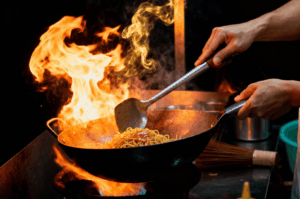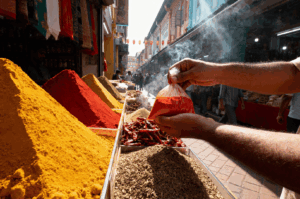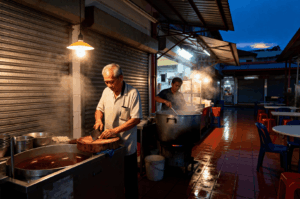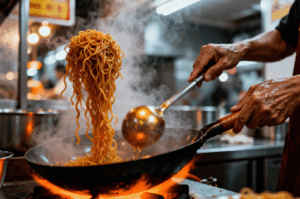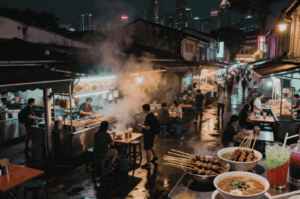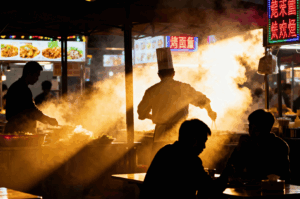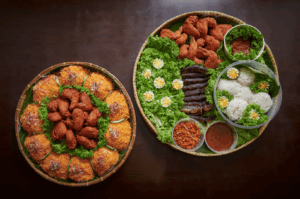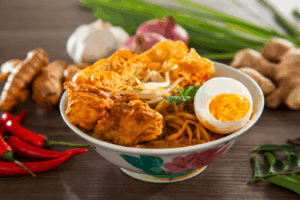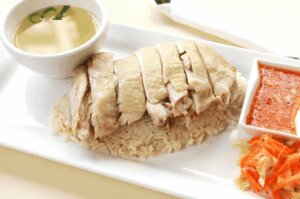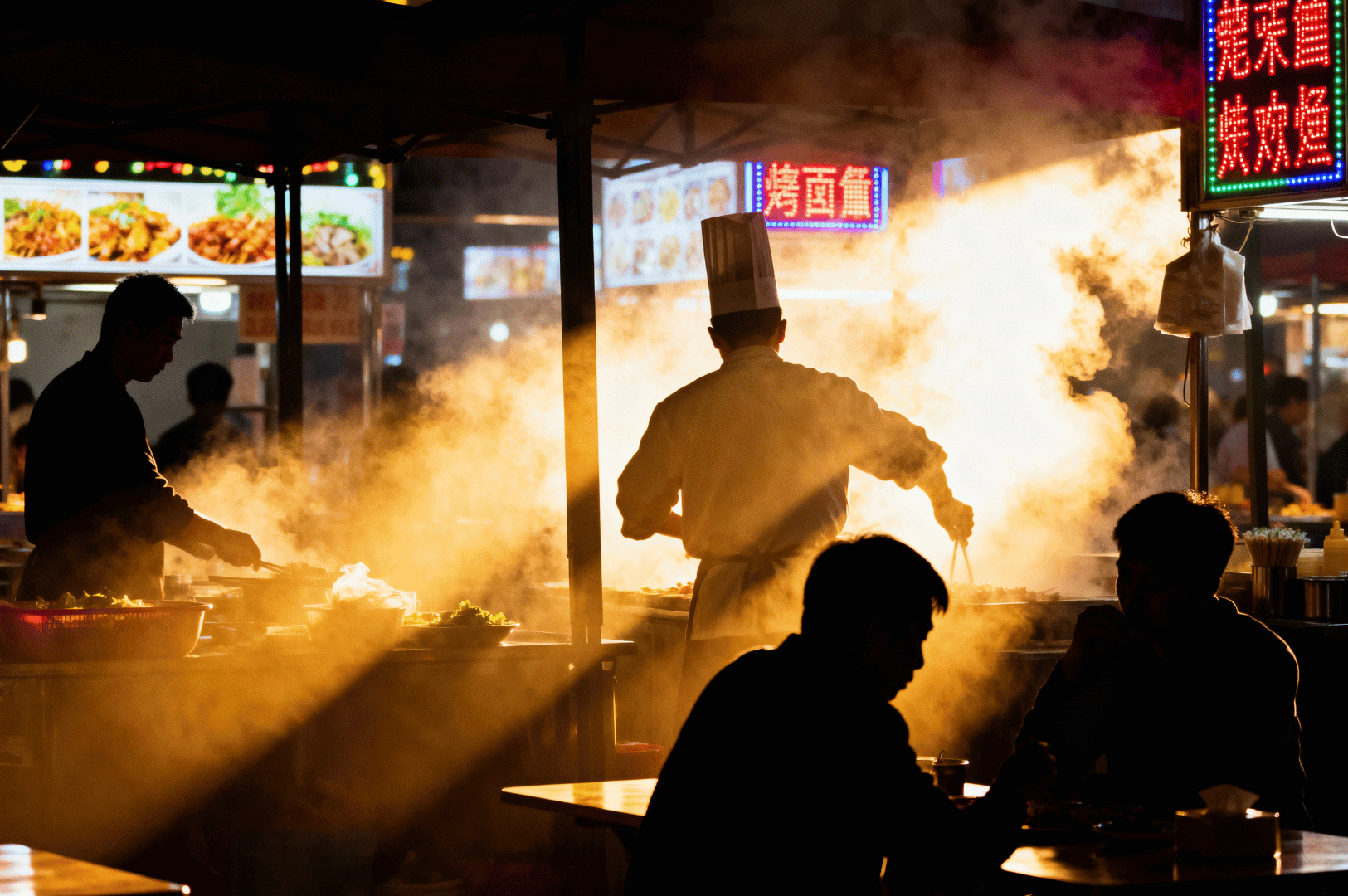
Under the roof of Maxwell Food Centre, steam and light collide, casting deep shadows across glowing stalls. This is the soul of Singapore hawker culture, where every hawker stall tells a story and every plate celebrates tradition. From a humble stall serving porridge to a popular stall dishing out world-famous chicken rice, the food centre is a living theatre of flavour.
The Origins of Hawker Centres
Hawker centres began in the 19th century as low-cost meals for dock workers and rickshaw pullers. Some recipes trace back to the British Navy, whose cooks introduced sauces and methods still seen today. Over time, hawkers moved from streets into covered food centres like Maxwell Market, creating communal dining rooms where strangers share tables and traditions. In 2020, UNESCO recognized Singapore hawker culture as Intangible Cultural Heritage.
Maxwell Food Centre Highlights
Maxwell remains one of the most popular hawker centres, a true treasure trove of tastes.
- Tian Tian Hainanese Chicken Rice – the legendary Hainanese chicken rice, praised by celebrity chefs like Anthony Bourdain and even challenged by Gordon Ramsay.
- Ah Tai Hainanese Chicken Rice – another favourite; loyal fans swear by Ah Tai’s silky chicken and chili sauce.
- Alimama Green Chilli Chicken Rice – a fiery twist that proves tradition can evolve.
- Maxwell Fuzhou Oyster Cake – golden, crispy oyster cakes filled with minced pork.
- Char Siew & Roast Duck Rice – caramelized char siew and succulent roast duck are Cantonese classics.
- Somerset Delicacies – wok hei–infused fried rice and noodles in generous portions.
- Special Shanghai Tim Sum – handmade dumplings and dim sum, alongside heritage snacks like hum jin pang and dough fritters.
- Fishball Noodle Soup – featuring silky rice noodles in a light, flavorful broth, this dish is a staple at several stalls, prized for the noodles' delicate texture and their role in authentic Asian recipes.
- Sweet endings – tapioca cake with palm sugar or gula melaka, comforting red bean soup with five spice powder, or a cooling chendol with red beans.
Other highlights include rendang chicken, chicken cutlet, pork chop Western food, luncheon meat dishes, and bowls of springy noodles, sour soup, or sliced fish topped with shredded chicken. Some stalls even once set out to sell Vietnamese food, but now serve unique bites like the south indian pancake—a popular breakfast dish from South India, made with fermented rice batter using traditional preparation methods, celebrated for its soft texture and subtle tang.
Choreography in the Stalls
Watch closely and each hawker becomes a performer. A head chef at Tian Tian wields his cleaver like percussion, while another tosses noodles with soy sauce under glowing flames. During the bustling lunch hour, Maxwell transforms into a stage of rhythm, flavour, and community.
Community Engagement at Maxwell
At the heart of Maxwell Food Centre is a spirit of togetherness that goes beyond just sharing a table. Social media has become an extension of this community, with Ah Tai and others encouraging diners to share their personal experiences through food photos online. The result is a vibrant tapestry of food photography, where natural light and creative angles capture the essence of each dish and the joy of community dining.
Tradition Meets Global Influence
Though rooted in heritage, Maxwell embraces multiculturalism. Alongside Thai food and banh mi, you’ll find Western food like pork chop or chicken cutlet. Stalls experiment while preserving techniques—braising, fermenting, and hand-rolling—that keep traditions alive.
Beyond Maxwell’s Shadows
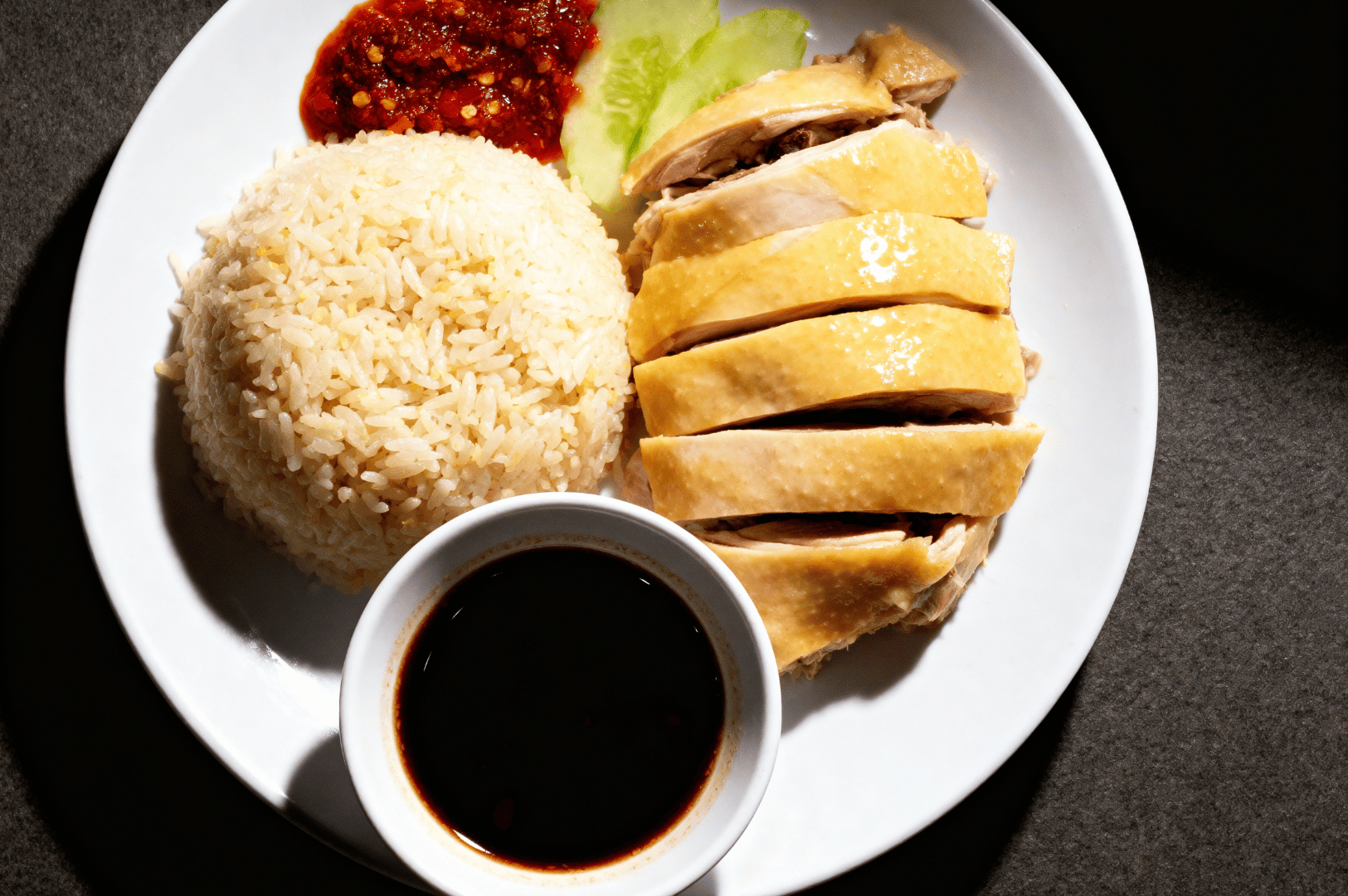
Other popular hawker centres add depth to the experience. At Chinatown Complex, you can enjoy jiang nan noodles, old Nyonya snacks, or comforting bowls of red bean soup. Elsewhere, stalls like Tai Hainanese Chicken Rice or Ah Tai Hainanese Chicken carry the torch of this shared tradition.
Food Photography Tips
Maxwell is equally a playground for cameras. To capture the perfect shot, use natural light where possible. Props like wooden boards or a dark plate help a dish pop and add texture. Incorporate deep shadows for mood, or focus on details—glossy sauces, crispy edges, or bubbling broths. These food photography tips bring dishes like fried chicken, oyster cakes, or dough fritters to life. Every photo tells a story, preserving both flavour and heritage.
Conclusion: A Taste of Singapore’s Soul
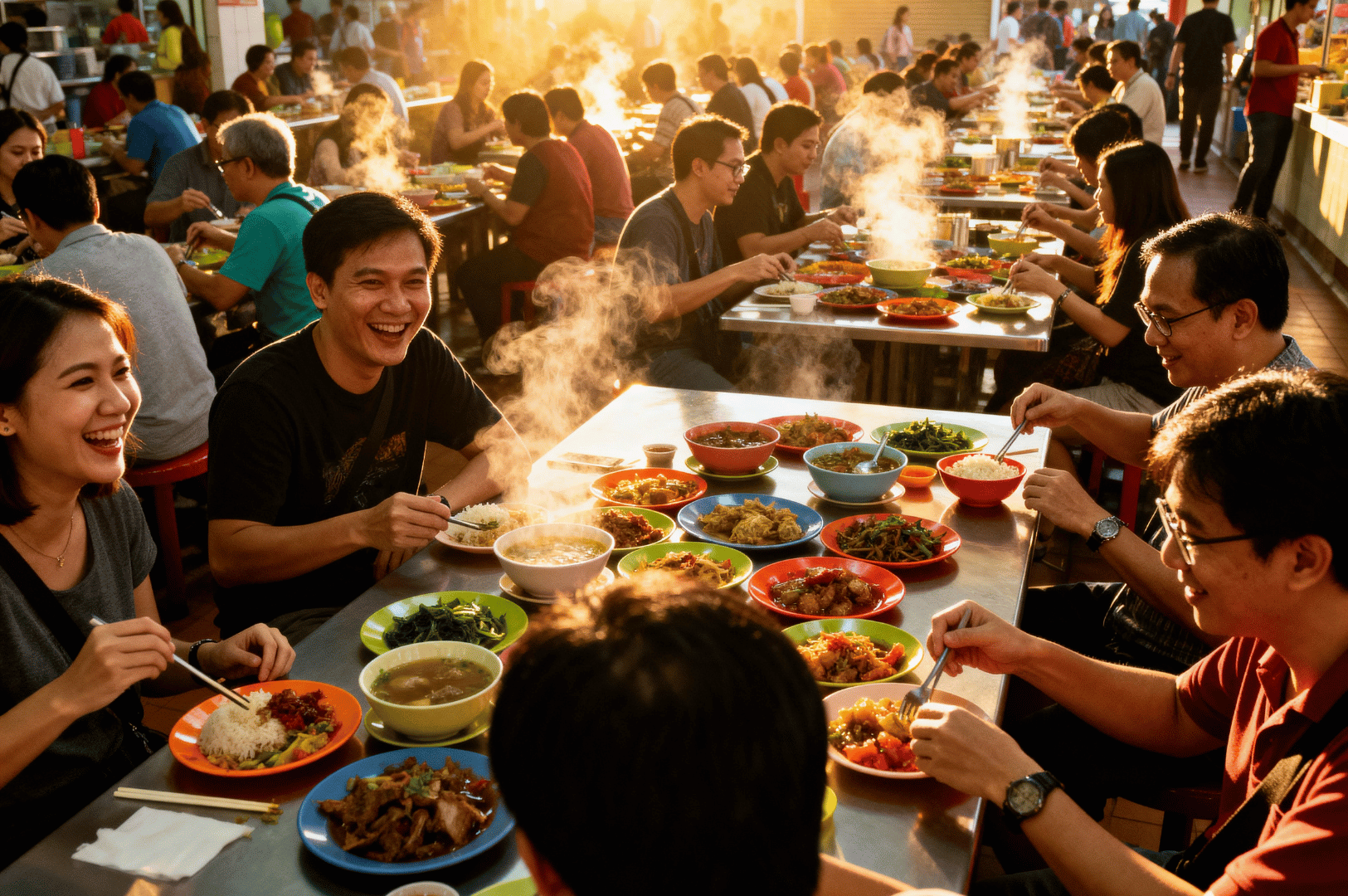
Dining at Maxwell is more than eating—it’s experiencing Singapore hawker culture in motion. From Hainanese chicken rice to braised duck, from century egg porridge to banh mi, every dish reflects history, innovation, and community. In this vibrant stage of steam and shadows, food is not just sustenance—it’s performance, preservation, and pride.
For more visual journeys through Singapore’s street food scene, explore the spice route of Little India or discover the smoky allure in our satay feature.
Wok Hei Photography: Capturing the Forbidden Pleasure of Char Kway Teow
October 24, 2025
In the heart of Singapore, amidst the symphony of sounds and smells that define its hawker centres, a culinary performance unfolds. The creation of char kway teow is a spectacle of fire and skill, a…
Little India Spice Photography: The Seduction of Senses on the Spice Trail
October 20, 2025
The moment I step into Little India, my camera feels like an extension of my senses. The neighborhood is a visual feast, a sensory overload that defines Singapore’s food scene. As a photographer dedicated to…
Pre Dawn Hawker Rituals: The 4AM Warriors at Maxwell Food Centre
October 17, 2025
Long before the city awakens, a deep dedication to Singaporean food culture is already stirring within Maxwell Food Centre. While most of Singapore sleeps, a silent ritual begins. Here, in the quiet, pre-dawn hours, the…
Hands & Heat of Singapore Hawker Culture: A Food Photography Guide
October 13, 2025
In the vibrant heart of Singapore’s hawker centres, a visual story unfolds with every dish. It’s a narrative told not just through rich flavor and enticing aromas, but through motion, heat, and the tireless hands…
Singapore Night Food: Secret Tours & After Dark Culinary Delights
October 10, 2025
Steam billows from a wok, catching the neon glow of a nearby sign before vanishing into the humid night air. The sharp, tantalizing aroma of chili, fried chicken, and garlic mixes with the sweet char…
Steam & Shadows: Singapore Hawker Culture and the Dance at Maxwell Food Centre
October 6, 2025
Under the roof of Maxwell Food Centre, steam and light collide, casting deep shadows across glowing stalls. This is the soul of Singapore hawker culture, where every hawker stall tells a story and every plate…
Exploring Chinese Malay Fusion Cuisine: The Forbidden Union of Peranakan and Nyonya Food in Singapore
October 3, 2025
Step into Singapore’s hawker centers or heritage shophouses in Katong and Joo Chiat, and you’ll discover Peranakan cuisine-a vibrant fusion of Chinese ingredients and Malay cuisine. This culinary tradition, also known as Nyonya food, combines…
Spice Route: Little India Food Photography
October 1, 2025
Little India is at the heart of Singapore food, famous for its vibrant hawker centres, diverse dishes, and energy that draws both locals and visitors. Anyone interested in Little India food photography will find a…
Golden Hour Food Photography: Mastering Natural Light with Laksa
September 26, 2025
Picture a bowl of fiery laksa, its surface shimmering with a glossy glow as aromatic steam curls into the air. For food photographers, that sense of warmth and shine is a magical moment to capture-a…
The Slow Seduction: Hainanese Chicken Rice
September 22, 2025
Before you even take a bite, a plate of Hainanese chicken rice beckons with its glossy, tender chopped chicken cut, silky chicken skin, and a mound of glistening, chicken fat-infused rice. The delicate fragrance of…

